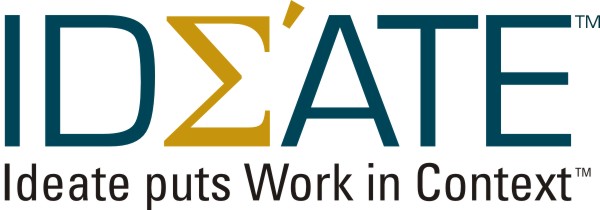The Network is the People™
On the battlefield there is a 'Fog of War' - uncertainty caused by a dynamic environment with evolving circumstances. No fixed plan could anticipate all scenarios. Context is situational/temporal and understanding changes.
Likewise, the fringes of the enterprise where interactions between customers, partners and co-workers take place, is an increasingly dynamic environment, the grey area is the ‘Fog of Business’.
In either case, following a fixed plan regardless of circumstances is nonsensical, emblematic of gratuitous bureaucracy.
Rather than being stuck in standard procedures, people need the authority and means (data, capabilities, policies) to flexibly meet objectives. Statically defined processes are anti-social!
People are the dynamic, adaptive, intelligent heart of the enterprise. Organization's need a Collaboration Architecture to empower people with the latitude to improvise.
Impediments to Change
Business environments are dynamic; organizations must cope with the intensifying velocity, variety and volume of distributed activity.
Sustainability in this environment requires agility; however rigid systems infrastructure acts as a straitjacket on the Enterprise. The problem is that the 20th century automation technologies that enabled tremendous efficiencies now inhibit the effectiveness of 21st century collaboration. The standardization of business processes removed human discretion, problem solving, and innovation.
Businesses have to overcome this structural barrier; systems need to support a looser form of organization that accommodates variance and change. This is a necessary phase shift from commodity to adaptive processes.
Adaptive Processes
Ideate enables businesses to loosely define processes; uncoupling Tasks from rigid flowcharts. These are emergent processes that unfold without fixed assumptions on the timing, sequence or frequency of events.
With no fixed flowcharts there is nothing to break – change can be managed in-flight. Based on authority, people can be empowered to exempt, modify, or add conditions to running processes so they can adapt to circumstances.
Ideate can recommend or direct actions based on interaction context. The degree of ‘structure’ varies step-by-step. In this way, processes are as flexible as possible or as procedural as necessary.
EnterpriseWeb™
The Ideate Framework™ (www.ideate.com) is an application-integration platform built on a Web-style architecture. It links people, information, capabilities and policies in virtual interoperability layer, an EnterpriseWeb™.
The EnterpriseWeb™ provides a native graph data model for navigating information free from the constraints that traditional business silos and systems pose. Everything is a Resource - distributed and loosely-coupled Information addressable by links. There are no schemas, encapsulation or Domain Specific Languages, just tagged Resources. All dependencies are logical relationships based on declarative rules.
The EnterpriseWeb™ provides the ideal environment for mashing-up information. Rather than winding-around complex and ‘expensive’ joins between disparate systems, Ideate uses simple link traversal to efficiently retrieve and process information. Resources are connected to each other by direct relationships and degrees of separation – like ‘friends’ and ‘friends of a friend’, but Ideate applies it universally to all information (business entities, reference data; documents; rules; functions; Services; etc.).
Resource relationships are ‘social’; they evolve dynamically based on real-time activity. In this way, end-users participate in continually co-developing the EnterpriseWeb of relationships rather than having it statically defined as with conventional databases, business processes, Services and Objects. This facilitates flexible perspectives, unanticipated uses, and change management; critical business capabilities sorely missing from conventional system designs.
In Ideate, applications co-evolve with their Resources making them more resilient to change. Just as changes to the design and content of websites do not, in and of themselves, break links, Ideate Resources can be modified significantly, without breaking related applications. In addition, all changes to a Resource, including its relationships, are recorded for version control in a wiki-like fashion. This provides developers with a native method of source control and business users with a detailed audit history.
While the World Wide Web is primarily for navigating content; Ideate has made the web functional. It has leveraged the scalability, link-ability and interactivity of the Web to provide a practical and scalable solution for enterprise agility.
Ideate provides a holistic application architecture that dramatically lowers the cost of managing variance and change.
It empowers people to drive processes and enables IT to adapt with the business.
Ideate enables enterprise context-awareness for smarter portals, processes and reports. It is able to deliver just-the-right mix of data, capabilities and policies for every interaction based on context-awareness.
With Ideate, interactions are 2-way conversations, real-time feedback loops that improve operational effectiveness.
Ideate provides flexibility while supporting governance, transparency and audit history.





You need to register in order to submit a comment.